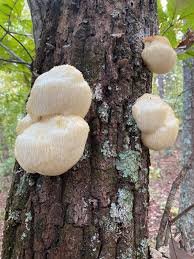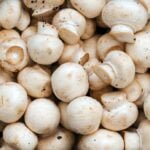How to Grow Lion’s Mane Mushroom
Learn How to Grow Lion’s Mane Mushroom, Lion’s Mane mushroom, scientifically known as Hericium erinaceus, is a fascinating and highly valued edible fungus with unique health benefits. Renowned for its distinctive appearance resembling cascading white icicles, Lion’s Mane is not only a culinary delight but also boasts potential cognitive and neurological benefits. Growing this mushroom at home allows enthusiasts to enjoy a fresh and sustainable supply while contributing to their well-being. In this comprehensive guide, we will explore the step-by-step process of cultivating Lion’s Mane mushrooms, from selecting the right substrate to harvesting the bountiful fruits of your labor.
Understanding How to Grow Lion’s Mane Mushroom
Before delving into the cultivation process, it’s essential to understand the unique characteristics of Lion’s Mane mushrooms. Unlike conventional mushrooms that have caps and stems, Lion’s Mane grows in distinctive, cascading clusters that resemble a lion’s mane or pom-poms. Not only is it a visually striking fungus, but it also contains bioactive compounds that have sparked interest in the field of neurobiology due to potential cognitive benefits.
Selecting the Right Strain
 Choosing the right strain is a crucial first step in learning How to Grow Lion’s Mane Mushroom. Various strains exist, each with its own set of characteristics, growth parameters, and flavor profiles. Some popular strains include “Hericium erinaceus,” “Hericium coralloides,” and “Hericium americanum.” Consider your preferences and the environmental conditions of your cultivation space when selecting a strain.
Choosing the right strain is a crucial first step in learning How to Grow Lion’s Mane Mushroom. Various strains exist, each with its own set of characteristics, growth parameters, and flavor profiles. Some popular strains include “Hericium erinaceus,” “Hericium coralloides,” and “Hericium americanum.” Consider your preferences and the environmental conditions of your cultivation space when selecting a strain.
Creating the Substrate
Lion’s Mane mushrooms are known to grow on a variety of substrates, with hardwood sawdust and wood-based materials being their preferred mediums. Here’s a step-by-step guide to creating a suitable substrate for your Lion’s Mane cultivation:
- Gather Ingredients:
- Hardwood sawdust (oak or beech is ideal)
- Bran (rye or wheat)
- Gypsum
- Water
- Mixing the Substrate:
- Combine hardwood sawdust and bran in a large container.
- Add water gradually while stirring until the mixture reaches the consistency of damp, crumbly soil.
- Integrate gypsum to improve the substrate’s structure and prevent clumping.
- Sterilization:
- Transfer the substrate mixture to autoclavable bags or jars.
- Sterilize the substrate to eliminate competing contaminants. This can be done using a pressure cooker or an autoclave.
Inoculation and Colonization
Once you have a sterile substrate, it’s time to inoculate it with Lion’s Mane mushroom spores or mycelium. Follow these steps to kickstart the colonization process:
- Prepare Inoculum:
- Obtain Lion’s Mane spores or mycelium from a reputable supplier.
- In a clean environment, transfer the spores or mycelium to the substrate.
- Incubation:
- Seal the inoculated substrate in a container with pin-sized holes for air exchange.
- Keep the container in a warm, dark place for the mycelium to colonize the substrate. This process typically takes several weeks.
Fruiting Conditions
Once the substrate is fully colonized by the mycelium, it’s time to induce fruiting. Lion’s Mane mushrooms require specific environmental conditions to form their distinctive structures. Here’s how to create the right environment:
- Temperature and Humidity:
- Maintain a temperature between 18-24°C (65-75°F) during fruiting.
- Humidity levels should be around 90%, which can be achieved by regular misting.
- Lighting:
- While Lion’s Mane can develop in low light conditions, providing a 12-hour light cycle can stimulate more robust and rapid fruiting.
Harvesting Lion’s Mane Mushrooms
As the fruiting bodies mature, it’s time to harvest your Lion’s Mane mushrooms. Here’s a guide to ensure a successful harvest:
- Maturity Signs:
- Lion’s Mane mushrooms are ready for harvest when their cascading spines are fully developed, resembling a furry ball.
- Harvest just before the spines start to turn brown, as the mushroom’s flavor and texture are optimal at this stage.
- Harvesting Technique:
- Use clean hands or sterile tools to gently twist and pull the mushroom from the substrate.
- Harvest the mushrooms in clusters, allowing smaller ones to continue growing.
Troubleshooting Common Issues
Cultivating Lion’s Mane mushrooms can be a rewarding experience, but it may come with challenges. Here are some common issues and how to address them:
- Contamination:
- Contamination can occur during substrate preparation or inoculation. Ensure a sterile environment, use quality ingredients, and follow proper sterilization techniques.
- Slow Growth:
- If the mycelium is slow to colonize the substrate, check the temperature and humidity levels. Adjust as needed to create optimal conditions.
- Abnormal Fruiting:
- If the mushrooms exhibit abnormal growth patterns, such as elongated spines or irregular shapes, it may be a sign of suboptimal conditions. Review the environmental parameters and make necessary adjustments.
Conclusion
Cultivating Lion’s Mane mushrooms at home is a gratifying journey that combines science, art, and a touch of culinary delight. From selecting the right strain to harvesting the bountiful fruits, each step requires attention to detail and a commitment to creating an optimal growing environment. As you embark on this adventure, remember that experimentation is part of the process, and each cultivation attempt provides valuable insights for future success. With patience, dedication, and a bit of mycological magic, you’ll soon be enjoying the unique flavor and potential health benefits of your homegrown Lion’s Mane mushrooms. Happy cultivating!




